Presidents: John Calvin Coolidge Jr.
Plymouth Notch, Vermont
Visited in 2009 and 2017.
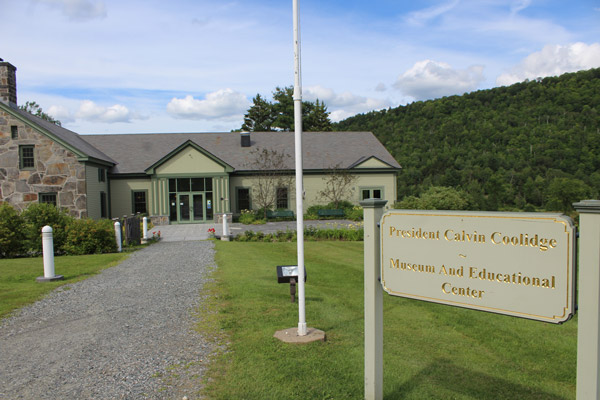
Welcome to the Notch!
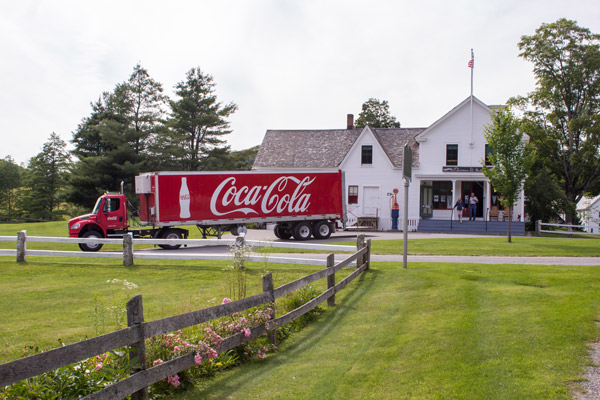
The general store gets a delivery.
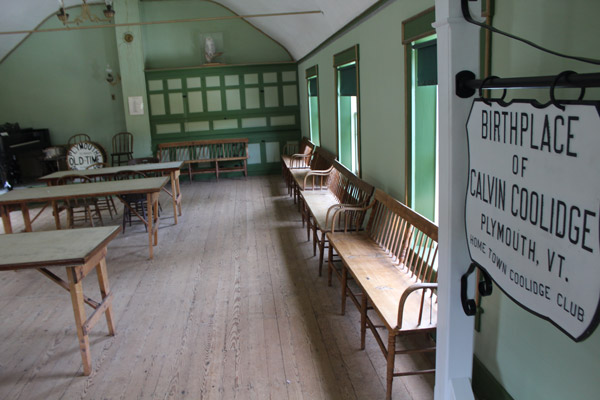
Above the general store, the "Summer White House" for 1924.
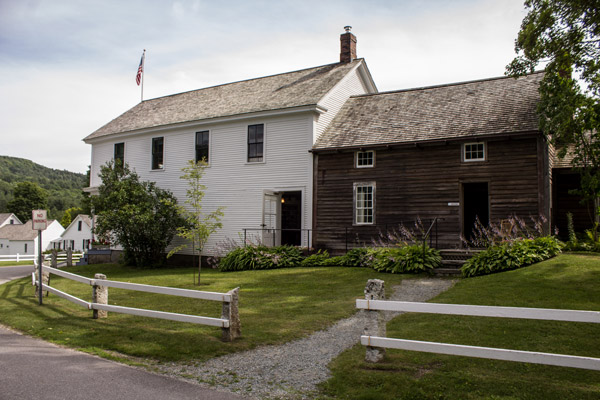
The general store. The brown addition is Coolidge's birthplace.
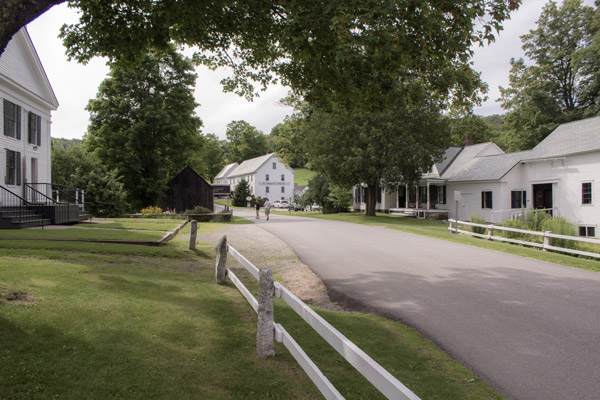
The main drag of Plymouth Notch. In the distance: The cheese factory.
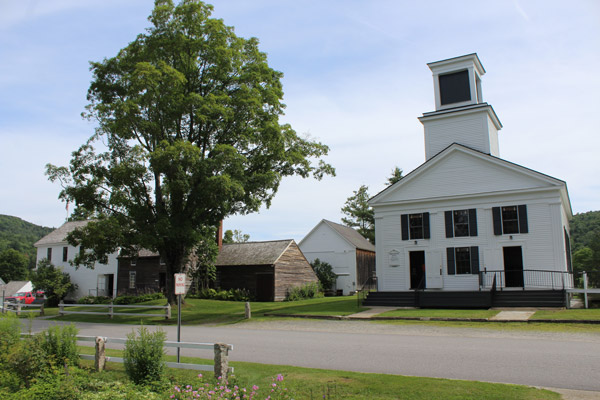
The town church, still in great condition.
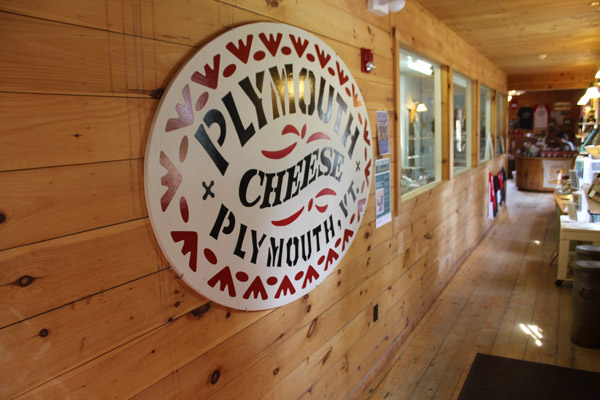
Cheese + history = good times.
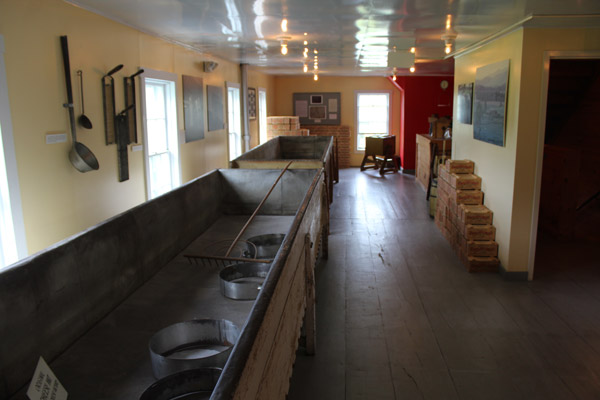
The cheese-making museum over the factory floor.
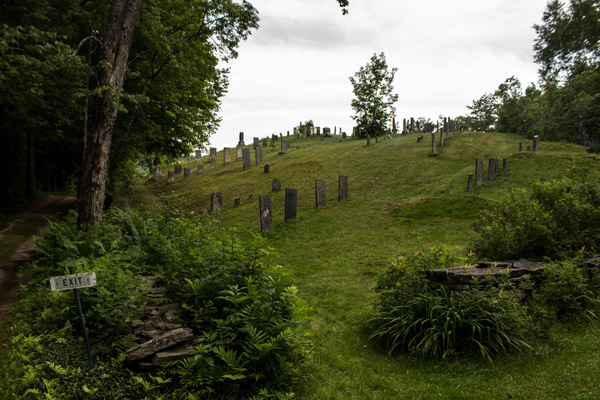
The town cemetery in all its green glory.
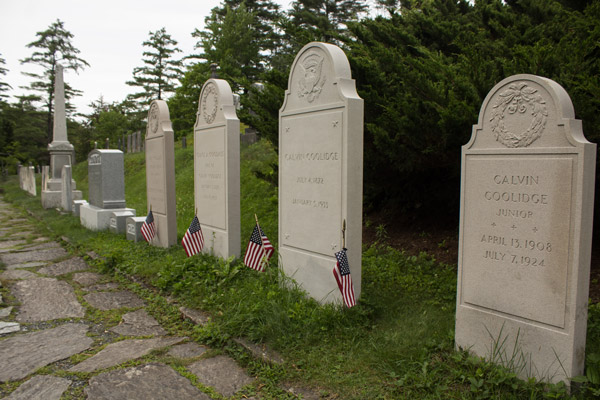
The Coolidge family, all in a row.
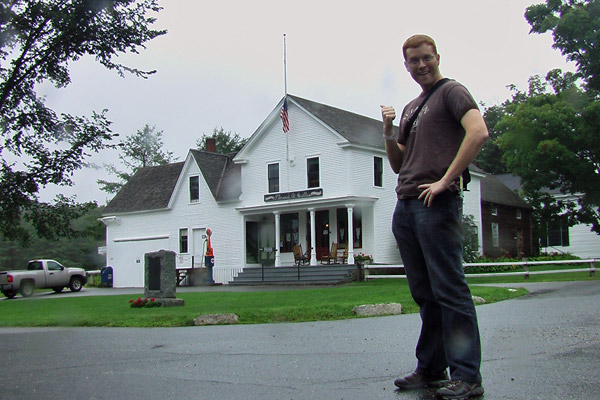
Checking out the general store in 2009.
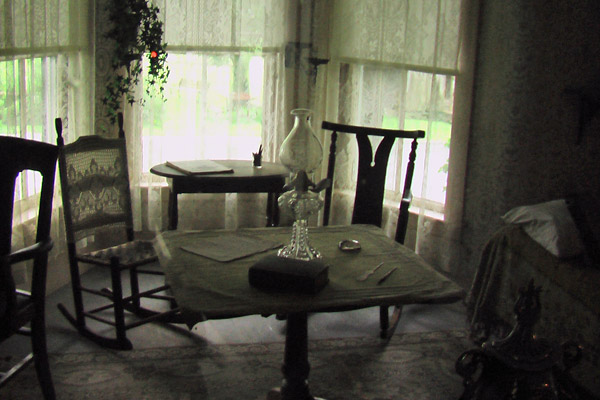
The spot where Coolidge was sworn in by his father.
History isn't a science. It's storytelling, fortified by research but guided by the unreliable force of memory. Truth bends over time -- many presidents have been considered great, then awful, then great again.
We should think about these things when we see a historic site, or a museum, or a presidential library. You're almost never seeing the "authentic" reality: The places we visit are sterilized, cleaned-up versions of what historic figures experienced. Mount Vernon and Monticello were plantations, bustling with human activity and blanketed with smells. LBJ used his ranch like a movie set, to create an image of a Lyndon Johnson that never really was. The modern world encroaches on too many sites, and our modern biases compel us to study many presidents -- and their homes -- in ways that would have seemed inane during their own lifetimes.
Having thought about these things, I do believe that Plymouth Notch might be the best presidential site.
Calvin Coolidge was born in Plymouth Notch, and so was his presidency. In early August 1923, President Harding was on a West Coast tour. After eating some bad seafood, or having a heart attack, or faking his death to run away with a mistress -- remember, truth is flexible -- Harding saw his presidency come to an abrupt end. The vice president was vacationing in Plymouth Notch, recharging his batteries and spending quality time with his family. He was roused in the middle of the night, and at 2:47 a.m. on August 3 he took the oath of office, from his dad, in their living room. Then at 2:48 a.m., they seemingly laminated the town for historical preservation.
The Coolidge site is about Calvin, but it's also about a way of life. Coolidge was a small-government conservative, who was always skeptical about how much government should be doing for the people. If you spend a few hours in Plymouth Notch you can see why. As an adult, Coolidge he made his home in Western Massachusetts, but Plymouth Notch was the place that shaped him -- and people there did everything themselves.
Colonel John (Coolidge's dad) was able to administer the oath of office because he was a public notary. He was a notary because he was also, at times, the operator of the de facto post office for Plymouth Notch. He had that responsibility because he also ran the general store. Which was across the street from his farmhouse, which was down the street from his cheese factory. The days aren't longer in Vermont, but they apparently wasted no part of them with stupid things like "play" or "sleep," instead preferring to build stuff and milk cows.
And all these places are still there for visitors to see. Calvin was born on July 4, 1872, in a room behind the general store, where his family was living at the time. Here's a transcript of the 2009 tour, offered by a very nice older lady who sat on the general store porch in a rocking chair in between tours: "That's where he was born." They honor Yankee stoicism by practicing it. God bless Vermont.
The general store would have been the center of town life, and the main distribution point for hard candy. On the second floor there's a "meeting hall" -- basically an open room with a little stage in the corner where the Plymouth Old-Time Dance Orchestra (all relations or friends of Coolidge) could set up. In 1924, Coolidge's son died from an infected blister developed on the White House tennis court. Doctors ordered the grief-stricken president on vacation, and so he set up shop in Plymouth Notch for a few weeks. The summer of 1924, the executive branch ran out of a room over top of a general store. Probably because it had the only working phone in town.
A few years after Coolidge was born, the family moved across the street to the farmhouse. It's one of those multi-functional New England dealies where the barn is attached to the house, so all your earthly possessions can smell like animals. (That's why they need all those Yankee Candles.) There's a spare bedroom -- today decorated with with a quilt made by Calvin Coolidge -- that was also used as a jail from time to time. (Colonel John was also the town constable at times.) The farmhouse has a parlor, the "oath of office" room and a laundry room. It also has a two-seat privy, which was the only sanitary facility in the house until 1932. In an era of running water and electricity, Our vacationing vice president would have been wiping with catalogs by candlelight when he stopped in to see the family. That's a man who won't care for government handouts.
The cheese factory was Colonel John's side hustle. He got together with a few of the local farmers and opened up the cheese factory, because they had cows, and everybody needs a hobby. They made granular curd cheese, because years of market research have proved that most people like granules in their cheese. The factory hasn't been in continuous operation, but it is currently open for business. On its second floor they have a mini-musuem which includes some of the original equipment installed by Colonel John and friends. Try the gouda, it's delicious.
The town's church is nearby. The church was the property of God, although it's possible that given enough time, Vermont farmers would have found a way to do his work as well. The Coolidges had a family pew toward the front. And there's a carriage museum at the end of the street, showcasing some of the vehicles and farm equipment that were essential to rural Vermont in the early 20th century.
Plymouth Notch was always a one-road town, and very little has changed in the last century: It is still in rural Vermont, with no cities crowding out the green spaces that Coolidge would have enjoyed in his youth. The surrounding farms are a little more modern, and the roads are better paved, but you do get the sense that the area isn't that far removed from the past. Things are especially quite at the town cemetery, where Coolidge is buried in a very modest grave. He's at end of a row of Coolidges -- not in the center. Aside from the presidential seal, it's about as modest as a marker can be.
Coolidge was a savvy politician. He understood the appeal of crusty New England self-sufficiency, and he was skilled at making that his brand. But at Plymouth Notch, you never get the sense that it was a hollow marketing ploy. Colonel John died in 1926, and Calvin passed in 1933, just a few years after leaving the White House. They were not there to steer the narrative, and the town's relatively remote location almost certainly kept it from becoming a tourist mecca. There wasn't any economic pressure to make the Coolidge story especially sexy. It just feels authentic.
And even if you don't believe me, they make their own cheese. Just go.
Northampton, Massachusetts
Visited in 2015.
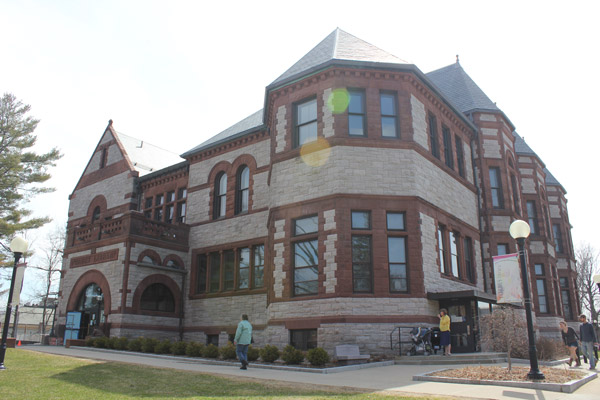
Forbes Library: Coolidge stuff AND free Internet!
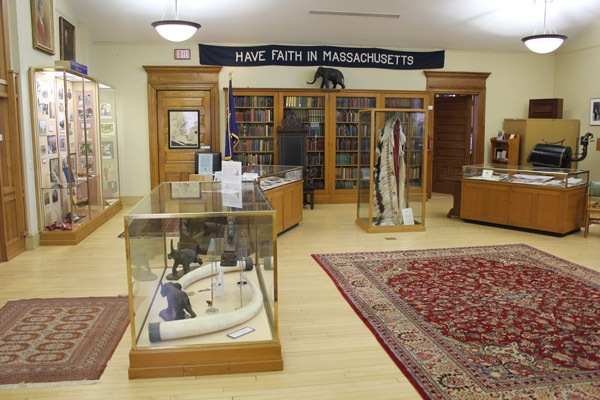
The museum inside the Forbes Library. Have faith in Calvin.
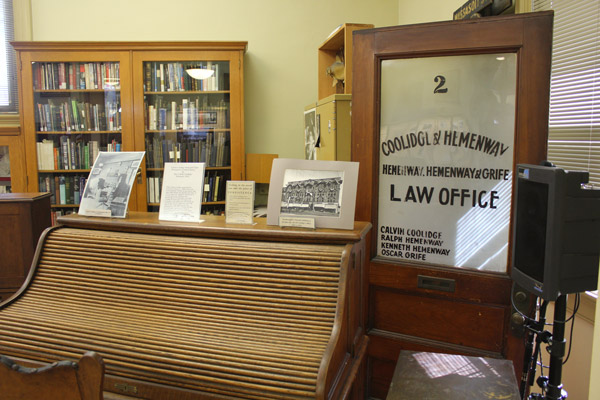
Forbes Library: Relics of Coolidge's career as a sort-of-country lawyer
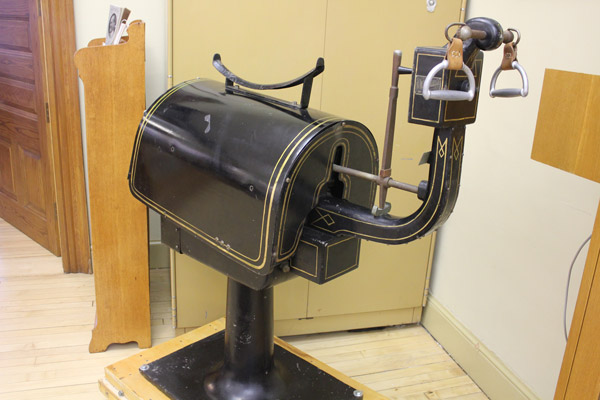
Forbes Library: Boss Hogg had the fat-jiggling belt. Silent Cal had the electric pony.
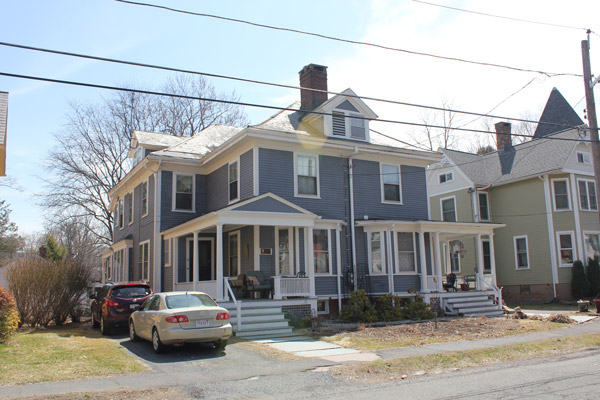
19-21 Massasoit Street: The left is the Coolidge half of their longtime duplex rental.
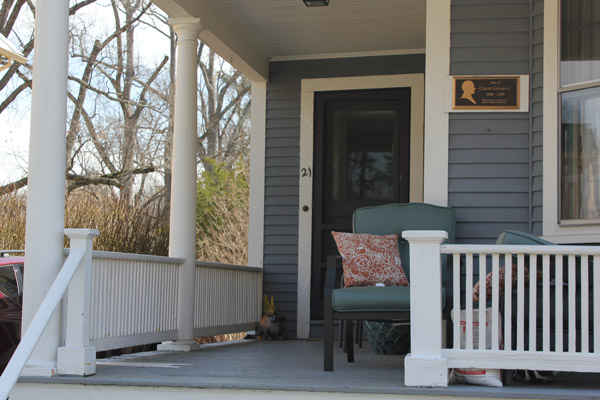
19-21 Massasoit Street: You can't enter, but the plaque more than makes up for it.
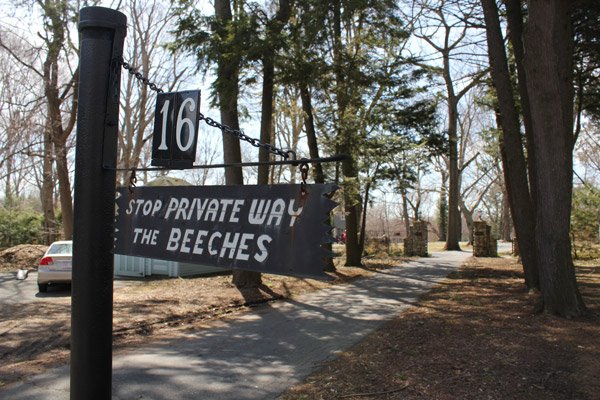
The Beeches: The last home (and deathplace) of Calvin Coolidge
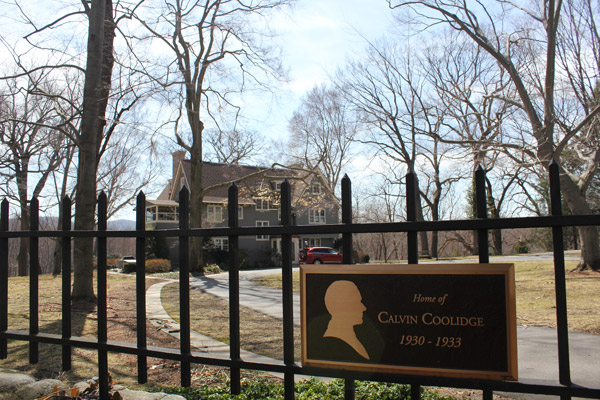
The Beeches: A private residence at 16 Hampton Terrace.
Calvin Coolidge was a Vermont boy. But to realize his potential, he had to head south, away from the rural confines of his home state. He made the long and arduous journey to ... Massachusetts.
The Vermont boy became an Amherst man. Coolidge enjoyed his college experience, completely buying into the transformative power of brotherhood, etc. etc. and so forth. (A bunch of friends from his Amherst days went on to become trusted advisers and facilitators for Coolidge's political career.) When school was over, he settled into adult life less than 10 miles away.
For the rest of his days, Coolidge's "home" was Northampton. He studied the law there, met his wife there, and became a full-blown crotchety New Englander there. He generally enjoyed becoming a big fish in a small pond. The first rungs on Coolidge's political ladder were local offices, and the recognition he earned in those jobs led to the state legislature, then the lieutenant governorship, then the governorship. (Back then it was still legal to be a successful Republican from Massachusetts.)
It's an inspiring middle-class story. But for presidential site thrill seekers, it's a little too modest. He was a man who very proudly told people that his wife darned his socks; so sadly, he did not leave behind anything in the way of pimped-out mansions.
Case in point: From 1906 to 1930 -- a period that included his entire presidency, his vice presidency, and his time as governor -- Calvin Coolidge was a renter. And not just any renter. Calvin Coolidge rented a duplex. He didn't spend much time there when he was leading the country, but for 25 years he shared a wall with some jerk. Coolidge is sometimes described as the originator of the "Good Neighbor" policy, and he probably got the idea when the dude next door let his dog crap on Coolidge's sidewalk for the hundredth time. This is a sitcom waiting to happen.
People still live in the duplex at 19-21 Massasoit Street, so all you can do is admire it from the sidewalk. And it's the same story for "The Beeches" (16 Hampton Terrace), the much bigger Northampton home that the Coolidges bought in 1930. That's where Calvin died in 1933, from a heart attack. Grace sold it a few years later, and it's been in private hands ever since. To the owners' credit, they do not release the hounds if you loiter around their driveway with a camera for a few minutes.
Photography from sidewalks and private driveways is fun for kids of all ages, but if you want something a little more engaging on your trip to Northampton, don't despair. Northampton is also home to the CALVIN COOLIDGE PRESIDENTIAL LIBRARY AND MUSEUM! Which, in true Coolidge fashion, is hilariously frugal.
The Coolidge Library is actually just a part of Forbes Library -- which is the public library for Northampton. It's New England efficiency at its best. I didn't have to do any archival research, so I can't speak to the quality of the collections. But my buddy Don and I enjoyed the museum. It's a small but really fun collection of Coolidge artifacts.
My favorites are the headdress and the horse. Coolidge cultivated the image of New England stoic, and for the most part he was one. But in an age where mass media was becoming a thing, he had an intuitive understanding that Americans wanted their leader to have some entertainment value. Coolidge slapped on all kinds of outfits for photo ops, and the most notorious (from a 1927 trip to South Dakota) was a Lakota headdress. Supposedly, his advisers told him he would look silly. His answer: "Well it's good for people to laugh, isn't it?" The mechanical horse was President Coolidge's home gym; someone gifted it to him, and he apparently loved using it while in the White House. Clinton allegedly had a mechanical bull installed, but that was just for use in intern wet t-shirt contests.
The Northampton of today is not the Northampton of Coolidge's time -- the city that produced a conservative icon is now one of the most liberal cities in America. (The Forbes Library is a few blocks from the campus of Smith College, where being conservative is the only unacceptable lifestyle choice.) But you can find Coolidge there if you want to! And if you're patient and fiscally responsible, eventually you'll be able to rent or buy one of his homes. Hey, your dreams don't have to be conservative.
